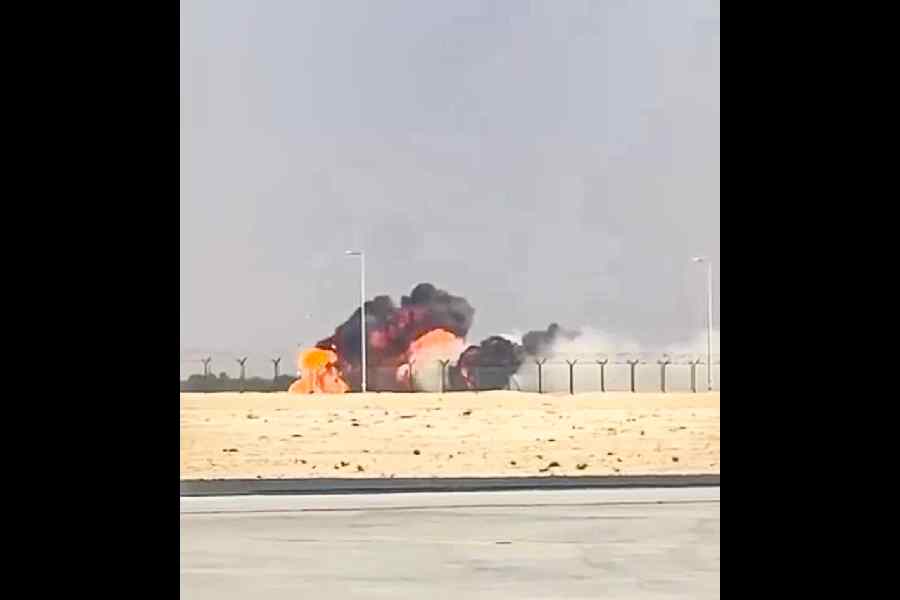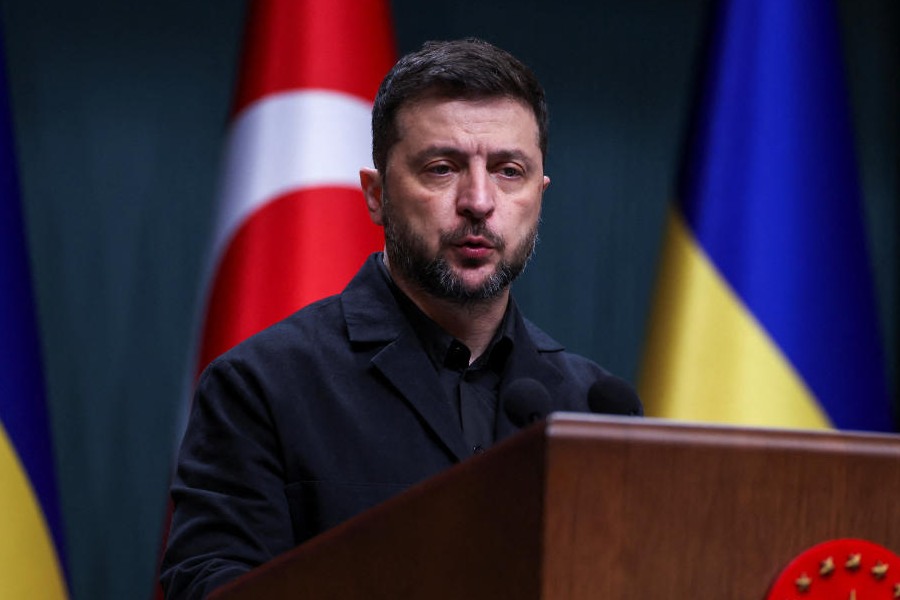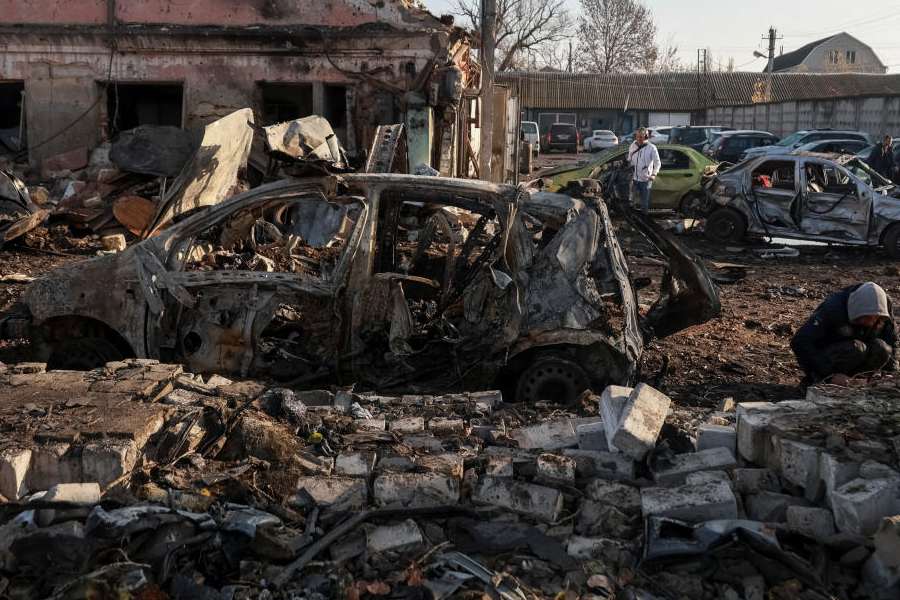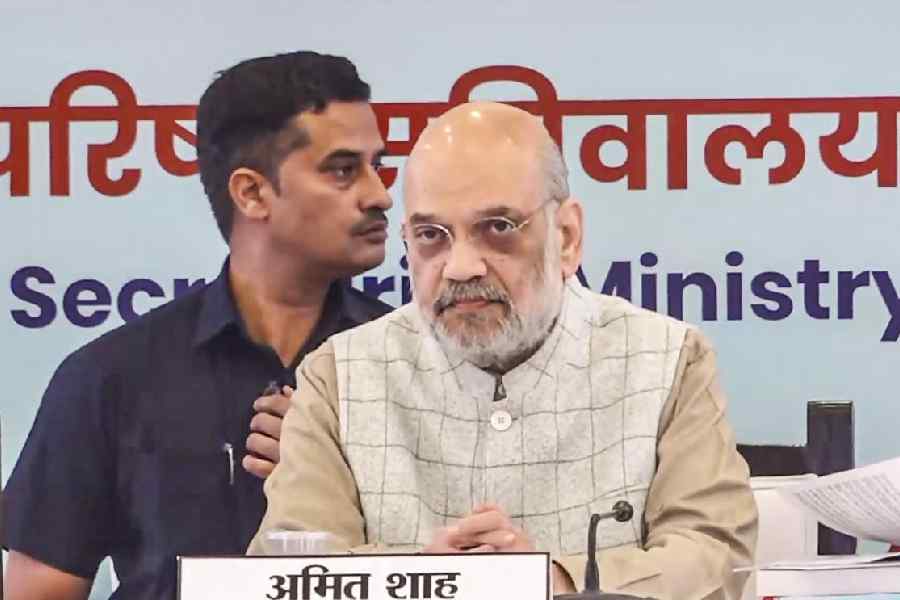An Indian Air Force pilot was killed after a Tejas fighter jet, the country’s flagship light combat aircraft (LCA) that has been hailed by Prime Minister Narendra Modi as “India’s pride”, nosedived and crashed during one of the world’s largest aviation exhibitions in Dubai on Friday.
“An IAF Tejas aircraft met with an accident during an aerial display at Dubai Air Show today. The pilot sustained fatal injuries in the accident,” the IAF said in a statement on X. The pilot has been identified as Wing Commander Namansh Syal.
“IAF deeply regrets the loss of life and stands firmly with the bereaved family in this time of grief. A court of inquiry is being constituted to ascertain the cause of the accident,” it added.
This is the second crash involving a Tejas LCA Mk-1 since the jet’s induction in 2016 and comes at a time the IAF is preparing to induct its advanced variant (LCA Mk-1A).
Several videos circulating on social media showed the jet built by Hindustan Aeronautics Limited (HAL) losing altitude while executing a manoeuvre and crashing on the ground before being engulfed in a ball of fire. The crash, which took place around 2.15pm (local time), sent thick plumes of smoke across the venue as shocked spectators looked on.
Modi, who has been pushing for “Make in India” in defence, had called the Tejas “India’s pride and a manifestation of the strength and skills of 140 crore Indians” after taking a sortie on the jet in 2023. The government has been promoting the Tejas as the future mainstay of the IAF.
“The pilot apparently failed to recover from a Negative G-force turn. It’s the force experienced in a direction opposite to that of gravity. The Tejas is capable of performing Negative G manoeuvres, which is one of its key features. An inquiry is on to ascertain the exact cause of the crash,” said an IAF official.

Firefighters work at the site of a crash involving an Indian-made HAL Tejas fighter jet at the Dubai Air Show, United Arab Emirates, November 21, 2025
In March last year, a single-engine Tejas jet had crashed near Jaisalmer in
Rajasthan.
The jet crashed minutes after participating in a tri-services exercise showcasing India’s progress towards self-reliance in the defence manufacturing sector. The pilot had ejected safely.
Chief of Defence Staff (CDS) General Anil Chauhan said in a statement on Friday that all ranks of the Indian armed forces “deeply regret the incident” at the Dubai show and “stand firmly” with the pilot’s bereaved family.
Defence minister Rajnath Singh said he was anguished at the loss of a “brave and courageous” IAF pilot.
The Dubai Airshow 2025 website says the event has attracted more than 148,000 attendees and exhibitors from 1,500 companies.
The fatal crash happened on the last day of the airshow hosted at Al Maktoum International Airport. The event began on Monday.
Tejas is India’s first home-grown fighter aircraft, albeit with a foreign engine. The Tejas is also equipped with an aerial refuelling probe mounted on the starboard side of the forward fuselage.
Sources in the IAF said the Tejas line had both one-seat and two-seat combat aircraft that are used by the IAF and the navy. The engine is provided by the US company General Electric. The Tejas that crashed on Friday was the single-seat variant.
Tejas is a 4.5-generation multi-role combat aircraft designed for air-defence missions, offensive air support and close-combat operations, and is recognised as one of the lightest and smallest fighters in its class. Among its key safety features is the Martin-Baker zero-zero ejection seat, engineered to enable pilots to eject safely even at zero altitude and zero speed — such as during take-off, landing or low-level manoeuvres — by explosively jettisoning the canopy, propelling the pilot clear of the aircraft and deploying parachutes to stabilise the descent.
Sources said the IAF inducted its first Tejas aircraft in 2016 and currently operates two Mk-1 squadrons (each comprising 16 to 18 aircraft). Both aircraft involved in the crashes belonged to the Mk-1 fleet, the first variants of the LCA.
The IAF, which is grappling with a shrinking fighter fleet, heavily relies on the indigenous LCA programme that specifically aims to replace the MiG-21 fleet. The programme, launched in 1983, has seen repeated setbacks.
The IAF currently has 29 fighter squadrons against the authorised strength of 42. An internal assessment following Operation Sindoor indicated that the IAF may need to field more than the authorised number of squadrons to meet future challenges.
In July this year, the IAF had expressed concern over the current pace of the Tejas LCA Mk-1A programme, saying the delay in the induction of new fighter planes could impact the air force’s combat effectiveness. It flagged its concern to HAL, calling for a timely execution of the ₹48,000-crore contract for 83 jets, which were ordered in February 2021.
The first aircraft was scheduled to be delivered in March 2024, but that didn’t happen. Of the 40 Tejas Mk1 jets ordered in 2006 and 2010, only 38 have been delivered.











